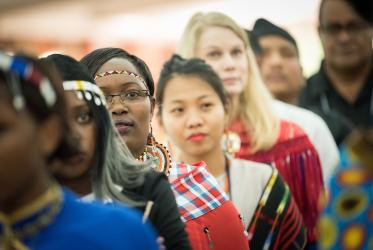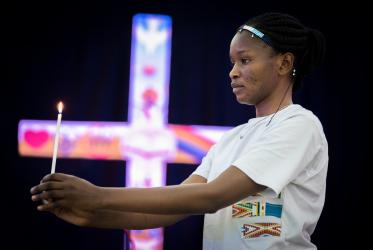Behera was referring to the International Missionary Council, founded in October 1921 at Lake Mohonk, USA, to foster missionary cooperation and mission in unity. The WCC Commission on World Mission and Evangelism is the historical successor of the International Missionary Council.
Behera is one of six members of a steering committee for a global International Missionary Council study process that began in January 2021 and will run to June 2022, with some 15 study centers and their networks in all eight WCC regions of the world.
During her remarks, Behera explained that one of the objectives of the study process is to draw a picture of what cooperation in mission was like in different parts of the world in the period around the founding year of the International Missionary Council.
First, she looked at the cooperation between missionaries and indigenous evangelists in the early years of an emerging church in Mizoram, a state in northeastern India.
“The foreign missionaries were able to reach only a few people,” she said. “It was the indigenous evangelists and itinerant preachers, who appropriated the gospel from within their own traditions, then shared and spread the gospel within and outside the region.”
Second, she considered cooperation between the white missionaries who were active in Mizoram. “Through personal contacts they collaborated and worked together in many ways,” she said. “Collaboration of societies happened in mainland India and had an impact on international cooperation, for instance on the concept of the Edinburg 1910 conference.”
Behera highlighted the distinctiveness of mission in Mizoram. “The missionaries working in these regions did not feel the need for the emerging churches to join the uniting movements that were taking place in mainland India which had led to the formation of the Church of South India (CSI) and the Church of North India (CNI),” she said. “In fact they were of the opinion that it would be more detrimental for the emerging church in the region.”
One of the results of this attitude is that most churches in Northeast India are both the churches of tribal communities and missionary churches, Behera explained, and this is part of her wider reason for mapping mission movements. “If we map mission movements and cooperation in the regions around the world, we get a clearer picture in which landscape the International Missionary Council was founded,” she said. "Its history as an organization is thus inscribed in a much broader picture than tracking only the history of the councils and societies which formed it.”
Missiological conference celebrates centenary of International Missionary Council








